
by Mary Caperton Morton Thursday, January 5, 2012
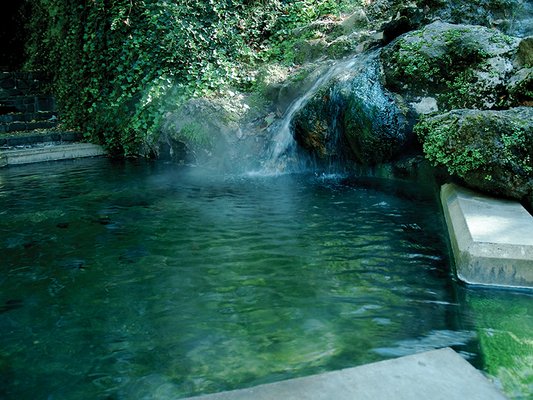
A mineral spring at Hot Springs National Park. Mary Caperton Morton
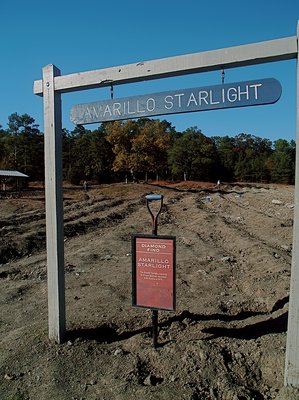
At Crater of Diamonds State Park near Murfreesboro, visitors can mine for diamonds in the open fields - and perhaps take home a giant diamond, like the 16.37-carat Amarillo Starlight, found in 1975. Mary Caperton Morton
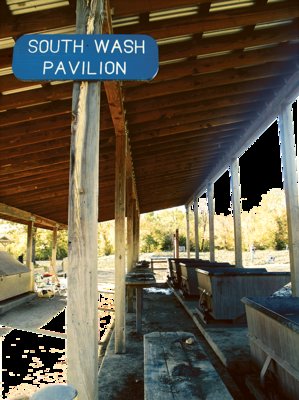
If visitors don't mind the mud, they can pan for diamonds in Crater of Diamonds' wet sluicing station. Mary Caperton Morton
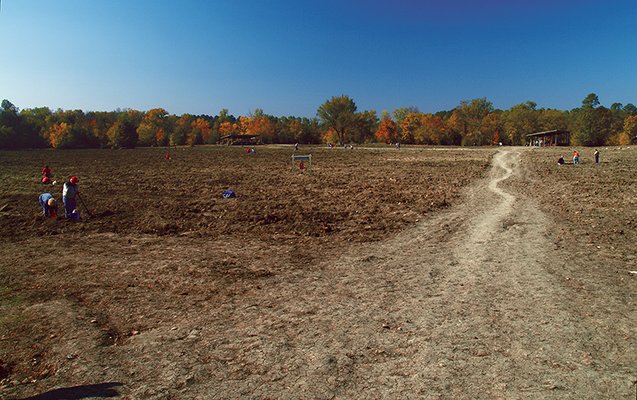
Visitors mining for diamonds at Crater of Diamonds State Park. Mary Caperton Morton
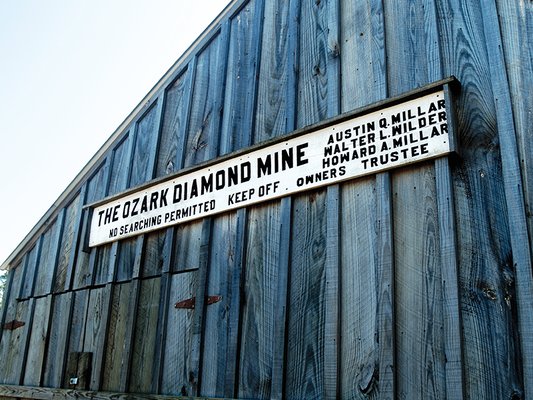
The Ozark Diamond Mine and others have tried unsuccessfully to mine the Crater of Diamonds State Park site commercially over the years. Mary Caperton Morton
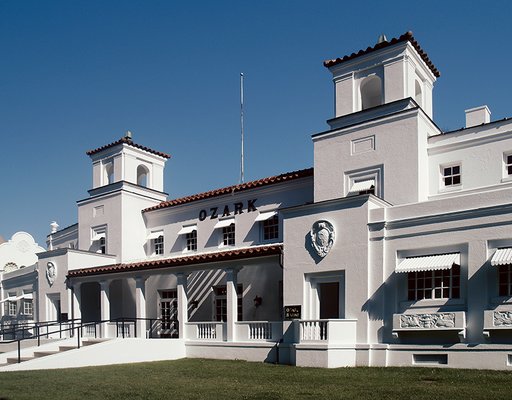
The historic Ozark Bathhouse in Hot Springs, Ark., closed its spa in 1977. It now houses the Hot Springs Museum of Contemporary Art. Mary Caperton Morton
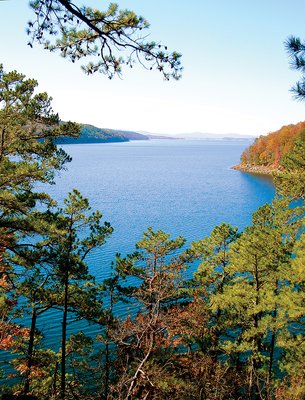
Lake Ouachita hosts sports from kayaking to fishing to swimming. Doc Gibson
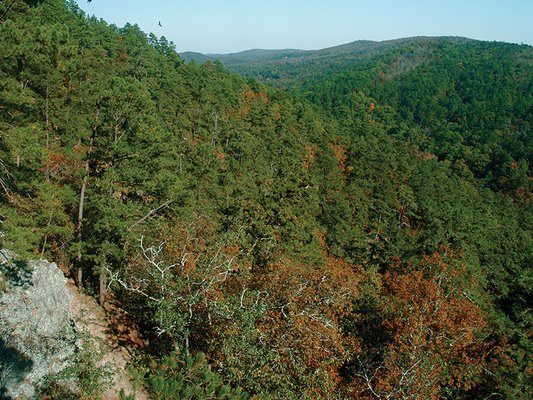
Hiking trails run through the Ozarks. Mary Caperton Morton
If the budget belt is a little tighter this year, consider packing your diamond-digging trowel, bathing suit and camping gear and heading to a little-known geologic hot spot in the middle of the United States. Arkansas, “the Natural State,” boasts the world’s only public diamond mine, uniquely heated mineral springs and the Ozark Mountains of Wilson Rawls’ “Where the Red Fern Grows” lore, all within a day’s drive from much of the United States. The state suits not only the budget-conscious traveler, but also the earth science-minded, offering enough geology for a great geo-centric trip to the south-central United States.
Arkansas is home to the eighth-largest diamond reserve in the world at Crater of Diamonds State Park. It is the only place in the world where anybody can mine for diamonds — finders keepers. Since the 15-hectare park opened in Murfreesboro in 1972, visitors have turned up more than 27,000 diamonds. Most of the park’s stones average a modest 25 points (100 points equals 1 carat), but there are some real whoppers out there: The 40.23-carat Uncle Sam Diamond, the largest ever found in North America, turned up here in 1924, and in 1990, a 3.03-carat stone was cut to a 1.09-carat gem and certified “Triple Zero,” for perfect cut, color and clarity, and declared “the most perfect diamond ever certified by the American Gem Society.”
People have been searching for diamonds in Murfreesboro since the late 1800s and have turned up more than 75,000 diamonds in total. Geologists think the 3-billion-year-old gems were brought to the surface by the eruption of the Prairie Creek Volcano more than 100,000 years ago. Although there are no traces of this volcano left on the surface, the upside-down martini glass-shaped pipe that once brought magma to the surface along with the diamonds still extends 200 meters belowground and contains an estimated 35 million cubic meters of diamond-bearing rock. Over the years, several groups — including the Arkansas Diamond Corporation in 1907, the Ozark Diamond Mine in 1912 and a Texas oilman in the 1950s — have attempted to mine Murfreesboro’s diamond crater commercially, but none has successfully mined the pit for profit.
Today, visitors to the park find an average of two diamonds per day, or about 600 each year. In two days of searching, I only turned up a handful of quartz, calcite and glass, but nine other visitors got lucky and went home with a diamond. About once a month, the crater, which looks like a fallow farmer’s field, is plowed by the park service to churn up new soil. The park rents all kinds of mining equipment, like screens, buckets and shovels, and provides wet sluicing stations for people, especially kids, who don’t mind getting muddy. Tent and RV camping sites are available at the park and Murfreesboro has plenty of hotels, motels, inns and B&Bs that cater to visiting miners.
After a couple days of digging in the dirt, you might want to head to Hot Springs National Park, about an hour northeast of Murfreesboro, for a soothing hot soak. People have been flocking to the Hot Springs area for more than 200 years to relax and be healed by the town’s famous mineral waters. And before them, Native Americans revered the region’s natural springs for their healing powers. Most of the world’s hot springs are fueled by hot magma deep underground, but the volcanic activity that brought Murfreesboro’s diamonds to the surface was the last igneous activity in now-dormant Arkansas.
So Hot Springs’ heat source is different: Rainwater trickles down through the brittle chert and novaculite (sedimentary rocks) that underlie the region to a depth of 2,400 meters. Pressure and radioactivity heat the water in the deep reservoir to nearly boiling. The buoyant hot water then returns to the surface through a series of fault seams, dissolving and picking up minerals along the way, until it reaches the surface in the hot springs at an average temperature of 61 degrees Celsius.
Sixty-one degrees Celsius is too hot for a soak, but the springs have been harnessed and fully developed for your bathing pleasure. The first bathhouses were built on the springs in the 1830s; during the town’s heyday around the turn of the 20th century, dozens of elegant spas catered to the elite and the ill, including President Franklin Roosevelt. Many of the springs are named after their mineral content or supposed healing properties: Magnesia Spring, Kidney Spring, Big Iron Spring and Arsenic Spring, to name a few. Today, several of the bathhouses are still in operation along Bathhouse Row, and the National Park Service runs a museum in the historic Fordyce Bathhouse. Spa packages run from a modest $20 soak to luxurious all-inclusive multi-day treatments. Visitors can also walk along the Grand Promenade, a brick path that passes by many of the springs’ natural outlets, or go hiking and camping in the hills above town.
Just west of Hot Springs lie the Ouachita Mountains, and to the north, the Ozarks. These mountains were created about 300 million years ago when what is now South America collided with the North American Plate. Both mountain ranges are home to national forests, dozens of campgrounds, and hundreds of kilometers of trails, including the Trail of Tears National Historic Trail, the infamous path taken by the Cherokee and other Native Americans during their forced relocation from their homelands in the southeastern United States to what is now Oklahoma. Fishing, horseback riding and caving are popular activities in this region.
Lake Ouachita State Park, just outside of Hot Springs, centers around Lake Ouachita, named one of the cleanest lakes in America. Water sports are quite popular, and the park offers boat, canoe and kayak rentals, scuba diving, swimming and excellent fishing. Rent a kayak and explore some of the lake’s 212 islands. The park offers cabins as well as tent and RV camping. For more luxurious accommodations, drive west on scenic route 270 to Queen Wilhelmina State Park, home to Arkansas’ Castle in the Clouds Lodge. This lodge, in operation since 1898, sits atop Rich Mountain, affording guests spectacular views of the Ouachita Mountains.
Between its diamond deposits, hot springs and the largest mountain ranges east of the Rockies and west of the Appalachians, Arkansas is host to a lot of intriguing geology. Whether you’re driving through or making Arkansas your destination, the Natural State has options for every geology-minded traveler. And who knows, if you find a real whopper at the diamond crater, it might pay for your whole vacation!
© 2008-2021. All rights reserved. Any copying, redistribution or retransmission of any of the contents of this service without the expressed written permission of the American Geosciences Institute is expressly prohibited. Click here for all copyright requests.